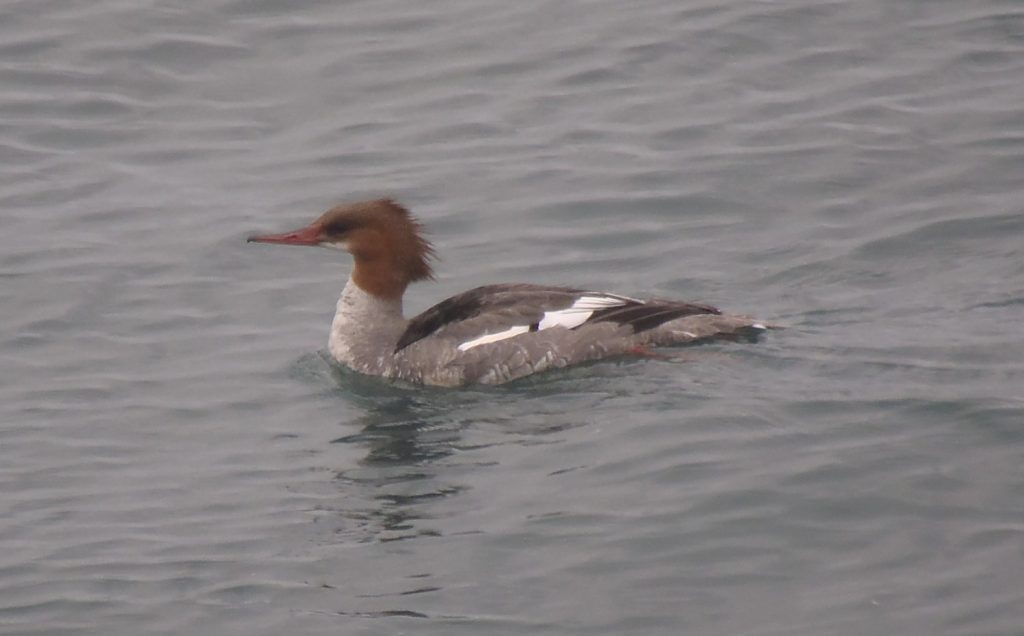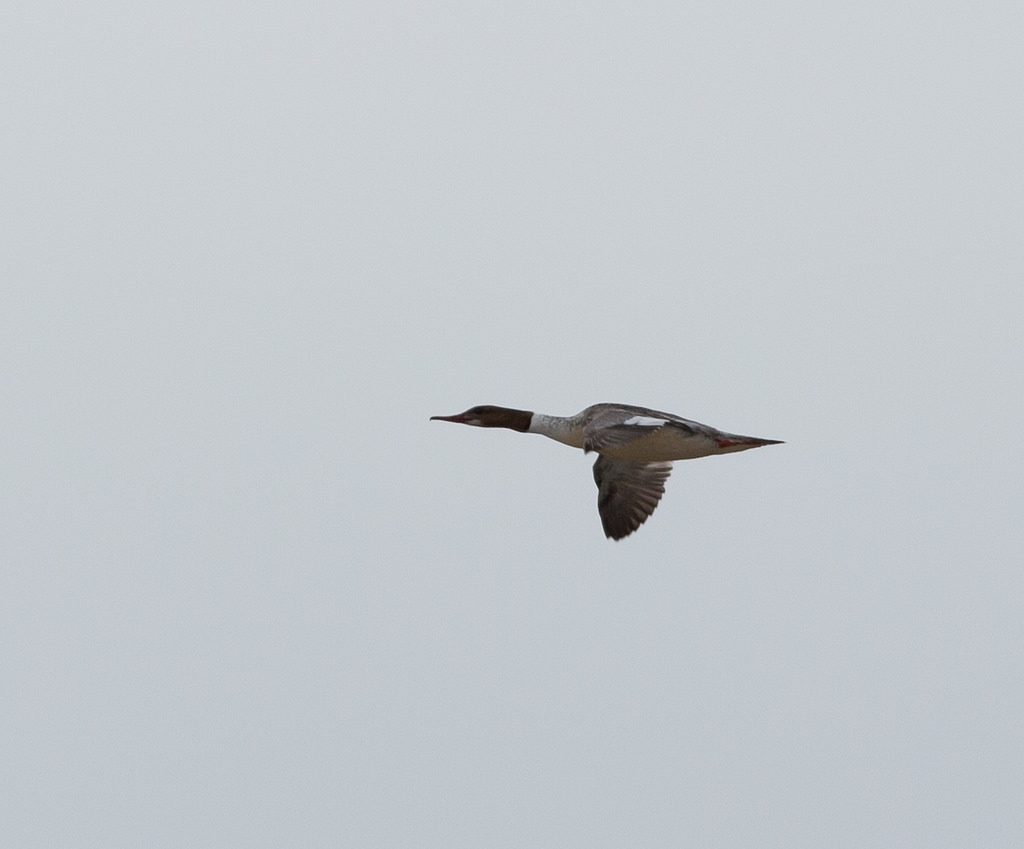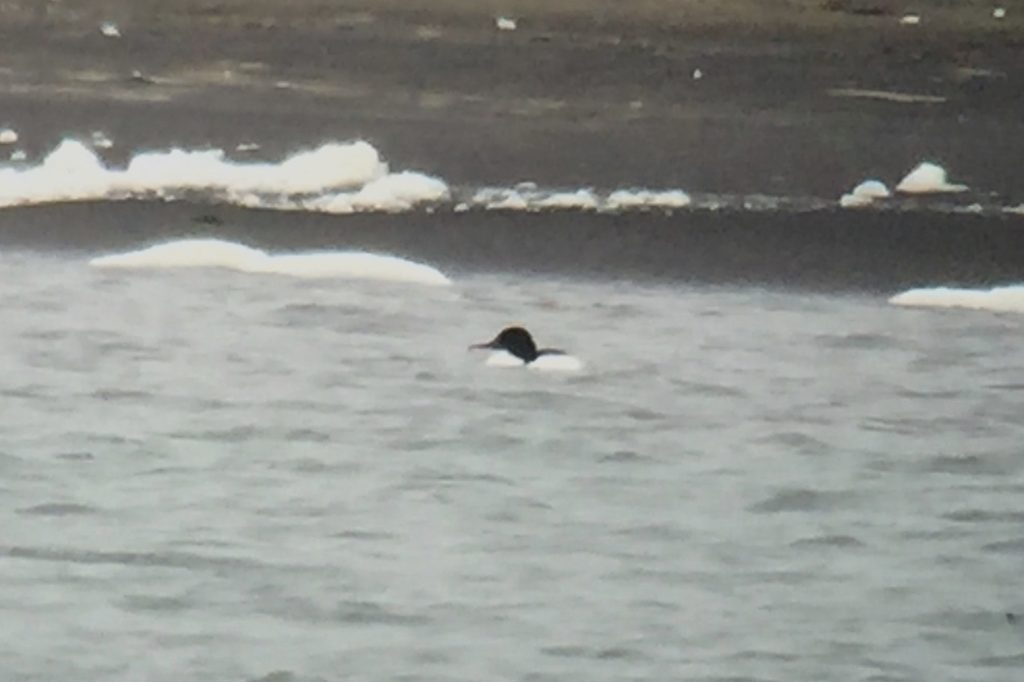A nearly annual spring vagrant that is seen in most years during mid-late May, though there are only a handful of records prior to the year 2000. It is most likely to be seen from May 10th-25th though the actual timing of this species in spring may extend much earlier than records indicate as it is one of the earliest spring migrants in Alaska and there is a lack of early spring coverage in the islands. It is rarely recorded during the fall, with only a single winter record, but the several late fall (mid-October to November) records indicate it may be more common at that time than is currently known. This species has never lingered into summer in the Pribilofs though there are a handful of summer arrivals in late June and July, which follow a similar pattern for waterfowl.
Both the Old World subspecies (known as Goosander) and the New World subspecies have been documented on St. Paul Island. It appears as though New World birds are more common but few records have been identified to subspecies as only breeding-plumaged males can be reliably identified.



